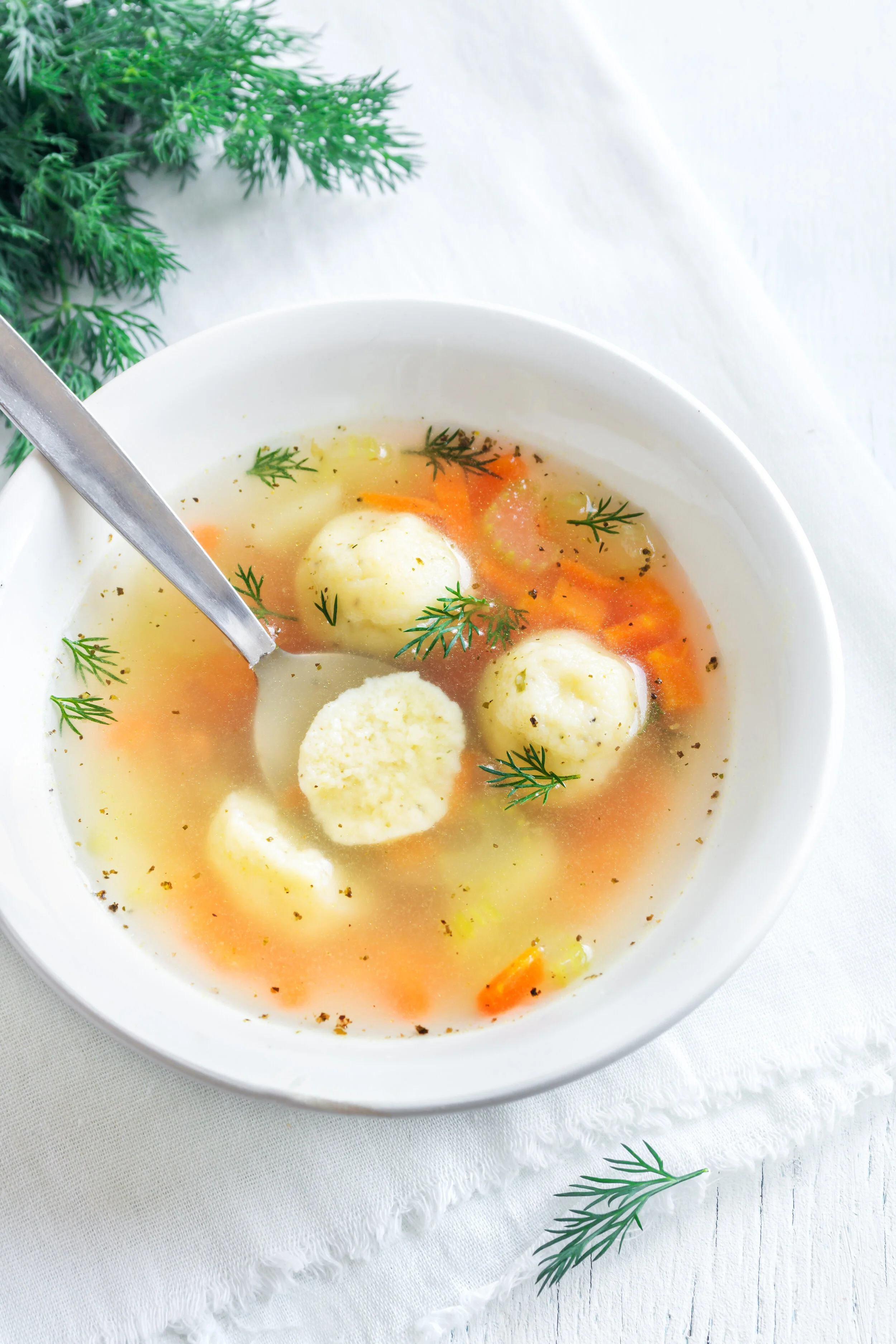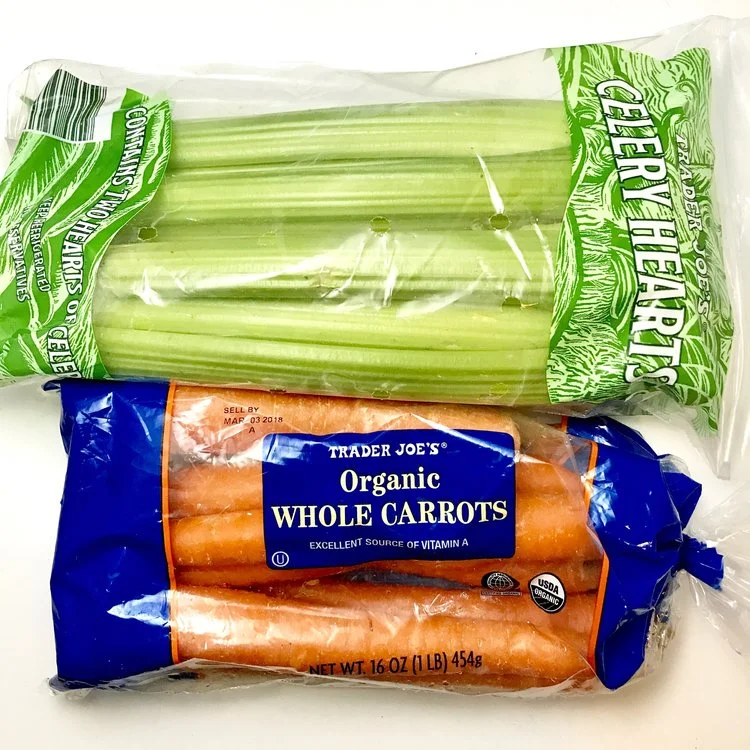Seasonal Winter Produce
The lists below detail seasonal winter produce. Fruits and vegetables purchased in-season will taste better, last longer and be more affordable. Have you ever bought strawberries in the winter, only to have them mold the next day? They're expensive since they're harder to source plus, out of season produce doesn't last nearly as long. My advice is to buy frozen produce when it is out of season. Actually, I prefer to stock my freezer with fruit and veggies year-round, especially before traveling. This way, I always come home to a kitchen full of healthy food. This tip also helps to cut back on the number of grocery runs I need to make. Fewer grocery runs mean less impulse purchases and less money spent.
The salad pictured is packed with winter favorites - kale, brown rice, roasted Brussels sprouts, grilled portobello mushrooms, beets, pumpkin and sunflower seeds, and served with a balsamic vinaigrette dressing.
Be cautious with canned fruits and veggies as they are often loaded with unnecessary salt, sugar and preservatives. Make sure to read the ingredients on the labels to know exactly what you're getting. It's wise to rinse canned produce with water before eating to eliminate some of the excess salt and sugar. When buying canned beans, I find the organic to have significantly less sodium than non-organic.
Benefits of seasonal produce:
Cheaper
Fresher
Higher nutritional value
Longer shelf life
Less transportation / carbon footprint
These points go hand-in-hand. When a particular food isn’t in season locally, it must be transported in. Longer commutes mean higher costs, shorter shelf lives and the less fresh it will be by the time it hits your plate. All around, eating in-season produce will always be your best bet.
Organic or not, the most important factor is that you’re shopping the perimeter of the store. Non-organic, out of season summer squash is still a better and healthier option than anything processed.
As always, remember to hydrate as the cold winter months tend to dry out our skin. Drinking water, using plenty of lotion and consuming water-rich foods such as beets, oranges and pears are all important. As the days grow colder, our instincts are to gravitate towards heavy, comfort foods. Go ahead, treat yourself to mac and cheese occasionally. More importantly, treat yourself to a fair share of fruits and vegetables each day. You deserve those too. Try serving the mac and cheese with broccoli. Who doesn’t like cheesy broccoli?
SEASONAL WINTER PRODUCE
FRUITS:
Apples
Avocados: year round!
Bananas
Dates
Grapefruit
Kiwi
Kumquats
Lemons: year round
Limes
Mandarins
Olives
Oranges: year round
Pears
Persimmons
Pomelos
VEGETABLES:
Artichokes (Dec and March)
Asparagus (Feb and March)
Beets: year round
Bok Choy: year round
Broccoli/Broccoli Rabe: year round
Brussels Sprouts
Carrots: year round
Cauliflower: year round
Endive: year round
Fava Greens
Garlic: year round
Kohlrabi
Leafy Greens: arugula, cabbage, collard greens, endive, kale, mustard greens, spinach, Swiss chard: year round
Mushrooms: year round
Onion: leeks, scallions, shallots: year round
Parsnips
Pea Shoots
Potatoes / Sweet Potatoes
Radishes: year round
Rutabaga
Sunchokes
Taro Root
Turnips: year round
Winter Squash: acorn, butternut, pumpkin, spaghetti
SEAFOOD:
Clams: year round
Cod: year round
Crab
Flounder: year round
Hake
Halibut: year round
Oysters: year round
Prawns: year round
Scallops
Squid: year round
Swordfish
Tuna
NUTS:
All: year round (almonds, pecans, pistachios, walnuts, etc.)
OUT OF SEASON (to name a few):
Apricots
Asparagus (beginning of winter)
Berries: all
Cherries
Corn
Cucumber
Eggplant
Fava Beans
Figs
Grapes
Green Beans
Melon
Okra
Peaches
Pears
Peas
Peppers
Pineapple
Plums
Rhubarb
Summer Squash: yellow, zucchini
Tomatoes
Winter food highlight: Squash
I LOVE squash. It’s both delicious and easy to prepare. Zucchini pasta is great in the summer but, wintertime is all about acorn, butternut, pumpkin, and spaghetti squash.
My mom keeps asking what I want for Christmas. I told her the only thing I need is a giant knife to slice spaghetti squash. Cutting it in half is no joke!
Benefits of squash:
Anti-inflammatory properties
Rich in antioxidants
Packed with vitamins and minerals
High in fiber
Helps regulate blood sugar
How to prepare squash:
Preheat oven to 350-400 degrees
Line baking sheet with aluminum foil or parchment paper*
Cut squash in half lengthwise
Remove seeds (I use an ice cream scooper)
Drizzle with olive oil, salt, pepper and other choice seasonings
Bake skin-side up for 45+ minutes
The longer you bake it, the easier it is to scoop out. Use a fork or ice cream scooper to shred the insides. Caution - it will be hot! Serve with soup or your favorite pasta recipe.
*Parchment paper and wax paper are NOT the same thing. Wax paper is not heat-resistant and should not go in the oven as it will meld to your food and could cause a fire. Both wax paper and parchment paper are non-stick but parchment paper is heat-resistant.
Winter spices:
Allspice
Cardamom
Cinnamon
Ginger
Nutmeg
Rosemary
Turmeric
Try seasoning basmati rice with cinnamon, turmeric, garlic and veggie broth.
Beta-carotene:
Beets, carrots, kale, sweet potatoes and winter squash are all rich in beta-carotene. This phytochemical helps to protect against UV rays which, believe it or not, reflect off the snow!
Winter begins on December 21, 2018 and ends on Tuesday, March 19, 2019.
-Mallory
Cut spaghetti squash in half lengthwise and remove the seeds.
Season with olive oil, salt, pepper and Italian seasoning. Flip upside down before baking to lock in the moisture.
Bake at 350 to 400 degrees for 45 minutes. The longer you bake, the easier it is to scoop out. Use a fork or ice cream scooper to shred the squash.
Spaghetti squash served with brown rice pasta, ground turkey, mushroom and marinara sauce.










